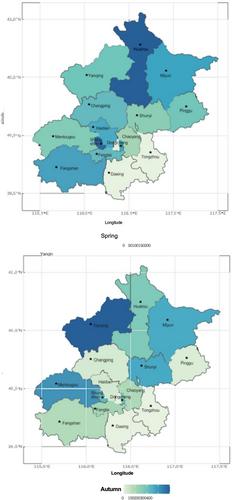Airborne pollen exposure and risk of hospital admission for allergic rhinitis in Beijing: A time-stratified case-crossover study
Abstract
Background
Airborne pollen is a crucial risk factor in allergic rhinitis (AR). The severity of AR symptoms can vary based on pollen type and concentration. This study aimed to estimate the association between exposure to different pollen types and AR risk.
Methods
We obtained data from patients admitted to the Beijing Tongren Hospital for AR, and data on pollen concentration, meteorological factors, and fine particulate matter (PM2.5) from 13 districts in Beijing from 2016 to 2019. We used a time-stratified case-crossover study design and calculated odds ratios (ORs) related to the risk of AR associated with a 10 grain/1000 mm2 increase in total pollen concentrations for specific pollen types. A stratified analysis was conducted to assess whether the associations were varied by age and sex.
Results
The OR of AR associated with a 10 grain/1000 mm2 increase in the 7-day average pollen concentration was 1.014 (95% CI: 1.014, 1.015), 1.076 (95% CI: 1.070, 1.082), 1.024 (95% CI: 1.023, 1.025), 1.042 (95% CI: 1.039, 1.045), 1.142 (95% CI: 1.137, 1.147), 1.092 (95% CI: 1.088, 1.097), 1.046 (95% CI: 1.035, 1.058), and 1.026 (95% CI: 1.024, 1.028) for total pollen, Ulmus, Cupressaceae, Populus, Fraxinus, Pinus, Betula, and Artemisia, respectively. Both tree pollen (Ulmus, Cupressaceae, Populus, Fraxinus, Betula, and Pinus) and weed pollen (Artemisia, Chenopodium, and Humulus) were correlated with an increased risk of AR. These associations remained consistent across distinct subgroups defined by both age and sex.
Conclusion
Exposure to pollen from trees and weeds might be associated with an increased risk of AR. This research provides valuable scientific support for both clinical practitioners and patients with AR regarding the hazards of pollen exposure.


 求助内容:
求助内容: 应助结果提醒方式:
应助结果提醒方式:


